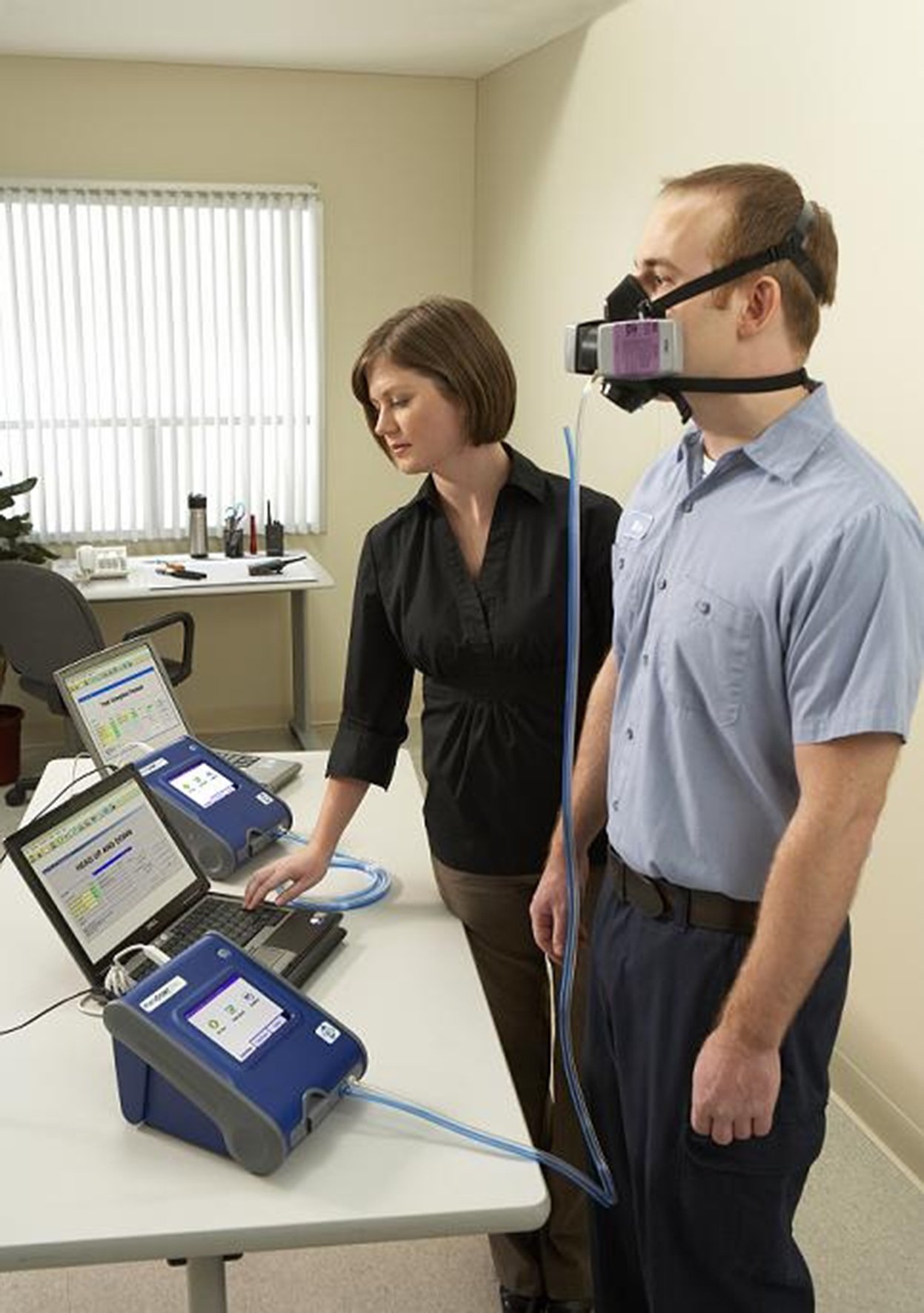The importance of RPE fit testing
For Respiratory Protective Equipment (RPE) to protect, it must fit the user.
The BSIF asks: does yours?
 Alan Murray, chief executive of the British Safety Industry Federation (BSIF), looks at health and safety in the Middle East as he highlights the importance of RPE Fit Testing by the Fit2Fit scheme, developed by the BSIF and supported by the UK Health and Safety Executive (HSE).
Alan Murray, chief executive of the British Safety Industry Federation (BSIF), looks at health and safety in the Middle East as he highlights the importance of RPE Fit Testing by the Fit2Fit scheme, developed by the BSIF and supported by the UK Health and Safety Executive (HSE).
In any country, using RPE can play a vital role in the protection of the respiratory health of the employee. However, research in the UK has shown that up to half of the RPE currently in use does not provide the wearer with the level of protection expected. One of the major reasons for this is that it simply does not fit.
Similarly, in data sourced by IOSH for the Middle East Annual Conference in 2014, 69% of construction companies have a serious lack of understanding of health and safety policy importance.[1] In addition, only 18% of construction companies in the Dubai Municipality conduct regular health and safety training. [2] Based on this data, it is clear that the health and safety record in the Middle East could be improved upon with greater training, as suggested by IOSH at the Annual Conference.[3]
Here in the UK, the HSE’s Approved Code of Practice (ACoP) governing the control of substances harmful to health COSHH, in the workplace states that you should only use RPE after you have taken all other reasonably practicable measures to prevent or control exposure. By going through the risk assessment process required by these laws you can determine whether the use of RPE in your workplace is appropriate.
For all tight fitting RPE face pieces, this includes disposable masks, half masks and full face masks, it is a UK legal requirement that, at initial selection of the product for the employee, the face piece is specifically Fit Tested to the wearer.

As we know, RPE must be ‘Adequate’ and ‘Suitable’. ‘Adequate’ means that the RPE is right for the hazard and reduces exposure to the level required to protect the wearer’s health, while ‘Suitable’ means that the RPE is right for the wearer and the task and the environment, such that the wearer can work freely and without additional risks due to the RPE. In order to satisfy that RPE is suitable and right for the wearer, it must be of the correct size and it must fit the wearer’s face.
Consider that, after all the work involved in the risk assessing process, adequate RPE is eventually selected to protect against the hazard, yet the protection is not provided because it has either not been fit tested or not been fit tested by a competent capable individual. Yet it has been recognised by a number of sources that the competency of some RPE Fit Testers can be inadequate in enabling them to carry out their function satisfactorily. This may be because they lack the necessary knowledge, skills, experience and understanding of fit testing and how it should be carried out.
At Fit2Fit we know that (correct at December 2015) 35% of those that sit the accreditation fail to demonstrate competency. Users need a competent face fitter to ensure that their RPE programme is not compromised. Users should insist that their face fit provider has been deemed competent and they are Fit2Fit Accredited.
The BSIF manages the Fit2Fit Accreditation scheme, endorsed by the HSE, which enables an individual to illustrate their competence and once accredited to be able to demonstrate that competence to those that require RPE Face Fitting Services. HSE inspectors recognise Fit2Fit Accreditation as evidence of the competence of the face fit testing that has been carried out.
It is essential to ensure that all employees, in any country are not putting their health in unnecessary danger at work. Where there is a risk of respiratory illnesses that can’t be mitigated at source and where RPE has been deemed appropriate, it must be fit tested to the wearer to ensure that it is suitable for the protection of that individual.
To find out more about the BSIF Fit2Fit scheme, visit http://bsif.co.uk/fit2fit or www.fit2fit.org
References:
[1] Managing liability for worksite accidents, Middle East Annual Conference 2014, IOSH, p.6
[2] http://www.safetymedia.co.uk/me/middle-east-safety-statistics/
[3] Managing liability for worksite accidents, p.7
The importance of RPE fit testing
For Respiratory Protective Equipment (RPE) to protect, it must fit the user. The BSIF asks: does yours? Alan Murray,
Safety & Health Practitioner
SHP - Health and Safety News, Legislation, PPE, CPD and Resources Related Topics
Future-proofing safety: Five trends shaping the PPE landscape of tomorrow
Workers facing uncertain future coupled with health and safety risks, new IOSH report says
Arco backs SHP campaign for PPE inclusivity


